How to Size a Bed That Fits Your Bedroom: Essential Guidelines
Selecting the right bed size for your bedroom can transform a cramped space into a restful retreat. Knowing the dimensions of your bedroom is essential before deciding on a bed size. Choosing a bed that allows for at least two feet of space around its sides can ensure optimal comfort and movement.
A well-sized bed not only fits into the physical dimensions of a bedroom but also harmonises with the room's layout. Consider the placement of other furniture pieces and available space for movement. This ensures that the bedroom remains functional and pleasing.
In addition to size, the style of the bed can impact how spacious the room feels. Sleeker designs might free up space, contributing to an airy atmosphere. Remember, functionality meets aesthetics when the bed complements the bedroom's overall design.
Understanding Bed Sizes
Choosing the right bed size involves knowing the dimensions of standard bed types and recognising how these may vary by country. These factors determine the best fit for a bedroom's space and the needs of its occupants.
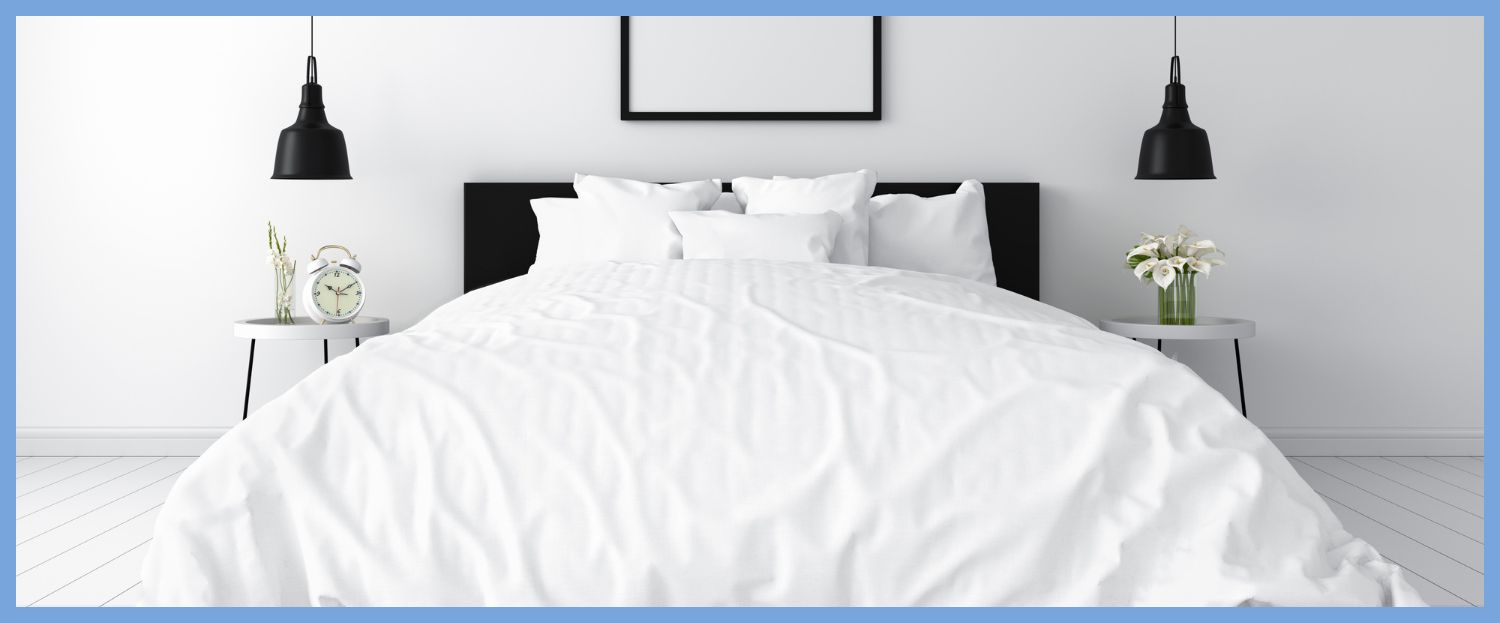
Standard Bed Dimensions
Standard bed sizes typically include Single, Small Double (Queen), Double, King and Super King Size. A Single bed usually measures 90 cm by 190 cm, suitable for one person. A small double bed, at 120 cm by 190 cm, provides a bit more room, making it ideal for guests or couples who don’t require much personal space.
A Double bed, measuring 135 cm by 190 cm, provides slightly more width, making it a popular choice for many households. King beds, often the most common choice among adults, typically measure 150 cm by 200 cm and offer ample space for two people who prioritise comfort.
For those with larger bedrooms or those who enjoy extra space, the Super King Size bed comes in at 180 cm by 200 cm, offering luxurious space and comfort. This size is perfect for those who want plenty of room to stretch out or require a bed for an expansive bedroom setting.
Bed Size Variations by Country
Bed dimensions can vary significantly by country. For instance, the United Kingdom typically follows the aforementioned dimensions, while the United States uses terms like Twin, Full, and California King, which differ in size. A UK Double is equivalent to a US Full, but Queen and King sizes differ between countries.
European countries might offer sizes like 140 cm by 200 cm, often termed as European Double. Understanding these variations is crucial for international shoppers or anyone considering importing a bed. Knowing these differences helps in making informed decisions when buying or comparing bed sizes across regions.
Assessing Bedroom Dimensions
Assessing the dimensions of a bedroom involves careful measurement and planning. It ensures a bed fits comfortably without obstructing movement or making the space feel cramped. Key considerations include the size of the room, allowance for walkways, and the impact of furniture layout.
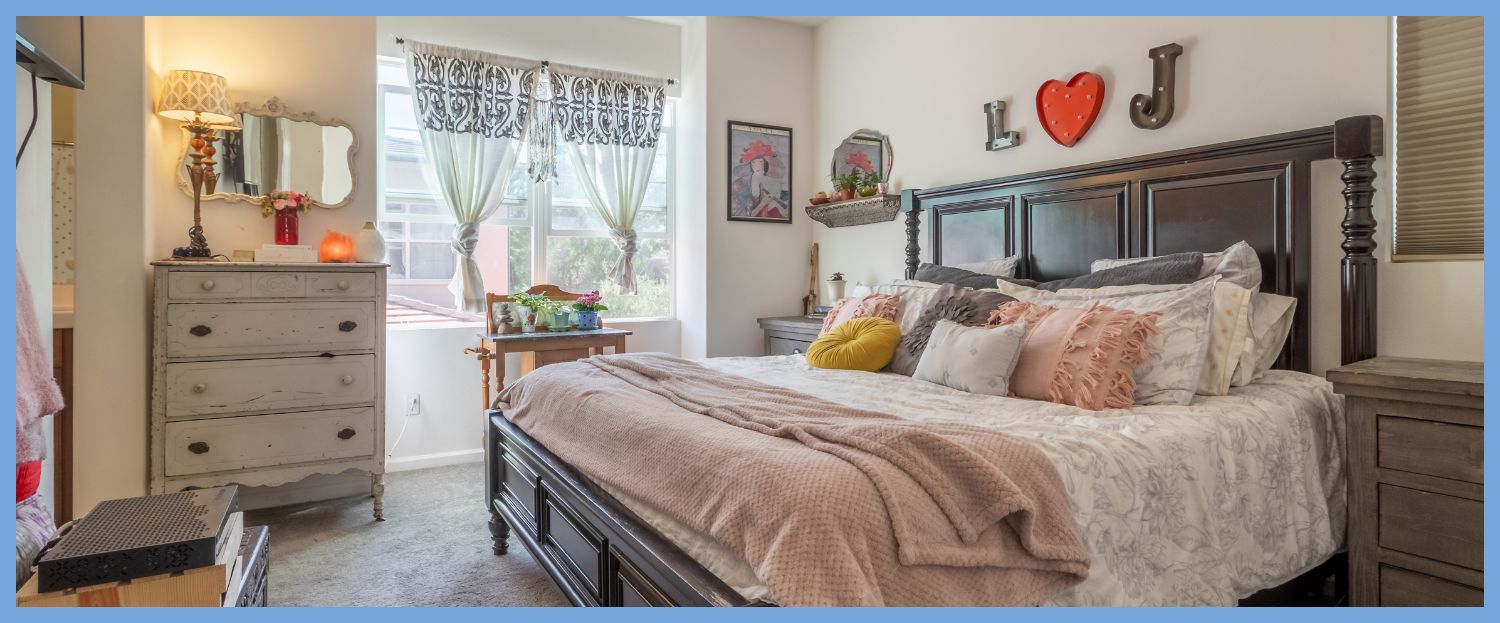
Measuring Room Size
Accurate measurement of room size is essential when selecting a bed. Each dimension—length, width, and height—should be noted. It's recommended to use a tape measure for precision.
First, remove any furniture that could obstruct accurate measurements. Measure along the walls, and record these figures. If the room features alcoves or bay windows, these should be measured separately to understand usable space.
Example Measurements:
|
Area |
Measurement |
|
Length |
15 feet |
|
Width |
12 feet |
|
Height |
9 feet |
Prepare a sketch to visualise the space, noting power outlets and windows' locations. This will help in planning the bed's placement within the room.
Accounting for Walkways and Furniture
Assessing walkways and furniture arrangement is crucial to maintaining ease of movement. Allocate at least 24 inches of space around the bed for walkways. Consider the position of doors, wardrobes, and drawers when planning these clearances.
Use a simple list to track necessary space around existing bedroom furniture:
- Bed: 2 feet on all accessible sides
- Wardrobe: Enough clearance to open doors fully
- Chair/Desk: 3 feet for comfortable access
Adjustments might be necessary if the room is compact. Ensure walkways are unobstructed, which enhances flow and accessibility.
Considering Room Layout and Shape
The room's shape can influence bed placement significantly. Square rooms provide more flexibility, while narrow, rectangular spaces might limit options. It's important to account for how the bed interacts with room features.
Square Rooms: Centre the bed for a balanced look.
Rectangular Rooms: Consider lengthways placement.
If there are irregular walls or features, such as chimneys or built-in cabinets, these must be integrated into the plan.
Visualise different layouts by using online room design tools. Adjust according to personal preferences and then finalise a layout that complements the room's unique attributes.
The ultimate goal is an aesthetically pleasing and functional space that allows for a good night's sleep.
Determining Appropriate Bed Size
Selecting the right bed size involves balancing the comfort needs of the individual while considering the space available in the room. The bed’s height and volume also play crucial roles in both aesthetics and functionality within a bedroom.
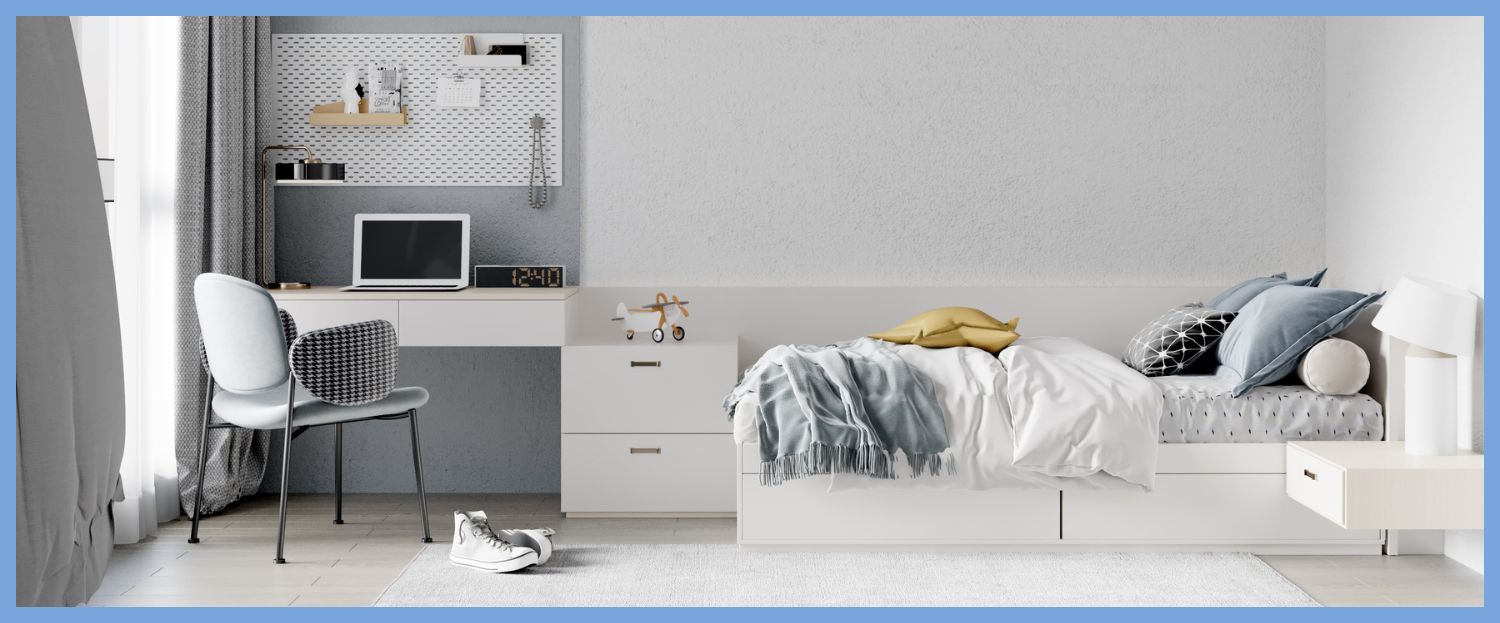
Balancing Needs and Room Proportions
When selecting a bed, evaluating the relationship between bed size and available space in the room is essential. Measure the room dimensions and consider existing furniture. A standard guideline is to leave at least two feet of space around the bed for ease of movement.
A single bed is ideal for smaller rooms or solo sleepers, while a king-size bed suits larger spaces or couples seeking more sleeping area. Consider lifestyle needs, such as sharing the bed with a partner or pets, which may necessitate a larger size.
Practical aspects also matter. Storage considerations, like built-in drawers, can influence the decision as the bed needs sufficient room for easy access. This ensures a balanced layout with adequate flow and function in the bedroom.
Impact of Bed Height and Volume
The height of the bed affects both convenience and aesthetic appeal. Individuals with mobility issues may prefer a lower bed for easier access. Those without such concerns might opt for a higher bed for added storage underneath (such as an ottoman).
Visually, bed height impacts how the room feels. Higher beds can lend a sense of grandness, while lower profiles create a modern, minimalist look. Consider ceiling height as well; low ceilings paired with tall beds can make the space feel cramped.
Volume refers to the overall bulk and design features, such as headboards or footboards, which can influence space perception. Opt for sleek designs in smaller rooms to maintain a sense of openness.
Choosing a Bed Frame
Selecting a bed frame involves considering both the size compatibility with the mattress and the material and style that suit the room’s décor. This ensures both functionality and aesthetic appeal.
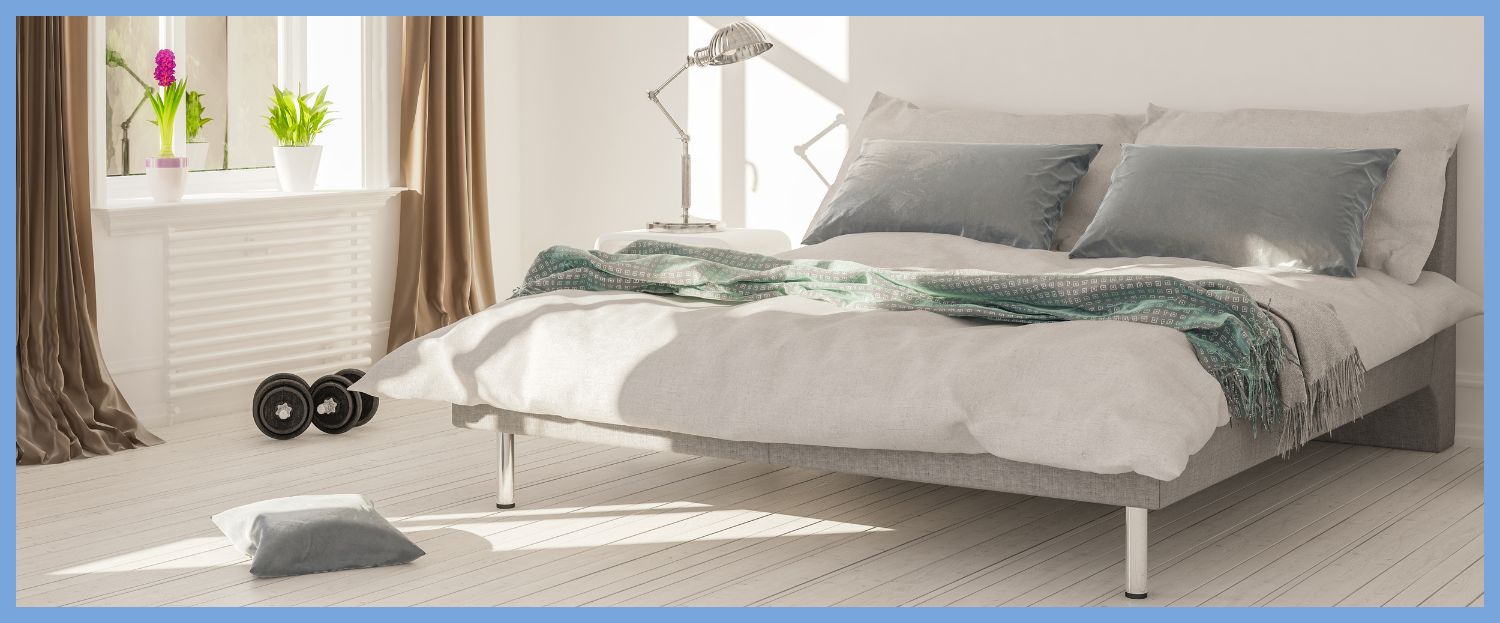
Frame Size vs Mattress Size
When choosing a bed frame, it's crucial to ensure it matches the mattress size. Standard mattress sizes include small single, single, small double, double, king, and super king. It’s essential to match the frame to the mattress to provide appropriate support and avoid any awkward overhangs.
A bed frame should generally be slightly larger than the mattress itself. This creates stability and comfort. Also, consider the dimensions of the bed frame's outer edges, as they can impact how much floor space is required. Avoid underestimating these dimensions to ensure that the bed fits well within the room without obstructing movement.
Material and Style Considerations
The material of a bed frame contributes to both its style and durability. Common materials include wood, metal, and upholstered options. Wooden frames often offer a warm and classic look, while metal can deliver a modern, minimalist feel. Upholstered frames introduce a soft, luxurious element to a bedroom.
In terms of style, think about the overall design of the bedroom. A sleek, contemporary room may benefit from a minimalist metal frame, while a rustic space could be enhanced by a robust wooden frame. Ensure the style complements existing furniture to maintain a cohesive aesthetic.
Optimising for Small Spaces
Making the most of a small bedroom requires strategic choices in selecting and arranging furniture. Opt for solutions that maximise space while providing functionality and style.
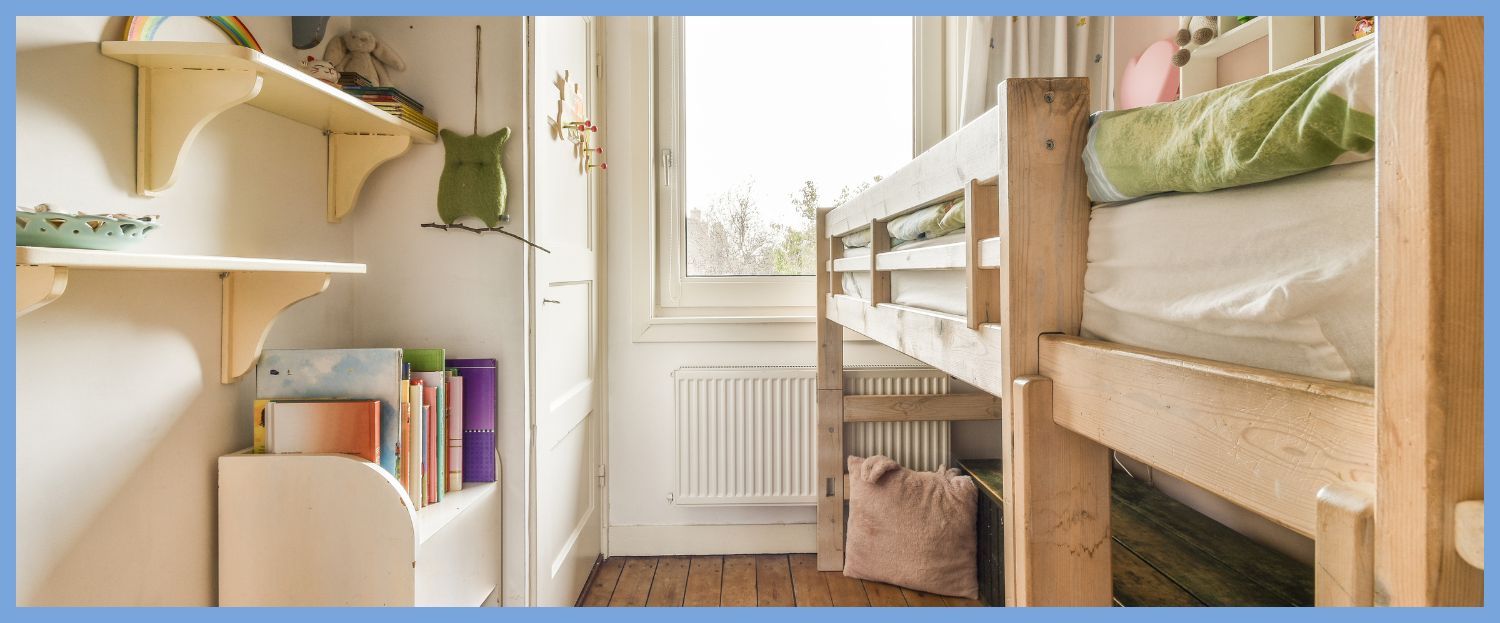
Space-Saving Bed Options
Choosing the right bed can significantly impact space efficiency. Platform beds with built-in storage underneath can eliminate the need for extra furniture like dressers.
Murphy beds, which fold up against the wall, free up floor space during the day. Consider bunk beds or loft beds for children's rooms, utilising vertical space and leaving room for other activities or furniture. Additionally, trundle beds provide extra sleeping space and can easily be stored away when not in use.
Each option caters to different needs, saving space in various practical ways.
Multifunctional Furniture
Selecting furniture that serves multiple purposes is key in small spaces. A sofa bed can transform living space into a guest room at night. Choose an ottoman with storage for seating and hiding away blankets or toys.
Fold-out tables can function as both dining areas and workspaces. Opt for bookshelves that serve as room dividers, combining storage with space delineation. Also, consider bedside tables with drawers or shelves to maximise utility.
These innovative solutions help in efficiently utilising limited room without sacrificing comfort or style.
Enhancing Bedroom Functionality
Optimising bedroom functionality involves thoughtful design choices. From clever storage solutions to integrating stylish accessories, each decision plays a crucial role in creating a balanced and practical space.
Incorporating Storage Solutions
Effective storage solutions can transform the organisation and appearance of a bedroom. Utilising under-bed storage or built-in wardrobes helps maximise space while maintaining a clean look. Consider multi-functional furniture like ottoman beds or benches that provide hidden storage without sacrificing style.
Shelving also offers additional space for displaying personal items or storing books. Choose adjustable shelves to customise and adapt to changing needs. Integrating drawers in furniture pieces, such as bed frames or bedside tables, keeps essentials within reach while reducing clutter.
Overhead cabinets or wall-mounted storage options provide accessible storage without occupying floor space. Magnetic strips for metallic items or hooks for hanging accessories can further increase functionality. Each piece should complement the room’s design, ensuring a seamless blend of form and function.
Selecting Complementary Accessories
Accessories add character and function to any bedroom. Choosing appropriate lighting enhances both mood and practicality. A combination of ambient and task lighting, such as floor lamps or bedside reading lights, allows for adjustable illumination according to activities like reading or relaxing.
Incorporate textiles like curtains and rugs to add warmth and texture, delivering both aesthetic appeal and comfort. Mirrors make a room feel larger and brighter, especially when placed opposite windows. Additionally, they serve a dual purpose by offering a convenient spot for grooming checks.
Artwork and decorative items should reflect personal taste while complementing the room’s colour scheme. Opt for versatile pieces that can evolve with changing themes or trends. Accessories should enhance the overall design without overwhelming the space, achieving a harmonious and personalised environment.
Final Thoughts on Bed Sizing
Choosing the correct bed size is crucial for both comfort and spatial harmony. The perfect fit depends not only on the room’s dimensions but also on personal needs and preferences.
It's helpful to measure the bedroom before purchasing a bed. Ensure that there is adequate space to move around. Having 60-90 cm of free space around the bed is typically recommended.
Related Reading: King vs Super King: Do You Really Need the Extra 30 cm?
A table can be useful for quick reference when deciding on bed sizes:
|
Bed Size |
Dimensions (cm) |
|
Single |
90 x 190 |
|
Small Double |
90 x 190 |
|
Double |
135 x 190 |
|
King |
150 x 200 |
|
Super King |
180 x 200 |
Consider other furniture in the room when selecting a bed. Wardrobes, nightstands, and any additional seating should fit comfortably alongside the bed.
Those who share a bed may need larger sizes like a king or super king, while one person might be satisfied with a double or even a single. The intended user’s height should be taken into account too, ensuring enough length for comfort.
Storage needs can influence bed choice as well. Ottoman beds or those with built-in drawers provide extra space without requiring extra room.
Reflecting on these considerations can help ensure that the chosen bed size supports both the bedroom’s aesthetics and functional requirements. This ensures a restful sleep environment that is both practical and inviting.





